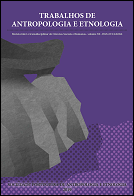The Birth of Mnemosyne. The Emergence of the Image of the Human at the Dawn of Food Production
Abstract
Rock art emerges, some 70 ka ago, as part of a process of anthropic understanding of the territories, framing them within culturally informed landscapes, under specific notions of space, time and cause. The paper starts with a discussion on the relations across memory, perceptions, techniques and oral and written communication. It argues that rock art, as a recording attempt, objectifies processes, i.e., takes them out of the flow of time and freezes them as moments, abstractions. Different functions are accomplished through such a process, from mnemonics to an understanding of time. Rock art may in part be understood as a cluster of mnemonics, rules, beliefs and perceptions, seating at the heart of integrated landscape management, regulating the logistics of human groups through a combination of regulations meant to prevent change (nomos) and an understanding of transformative processes (kairós). The emergence of the Human image is part of this, as an awakening of self-consciousness through memory in dramatic changing times, moving from a biome centred cosmovision of hunter-gatherer societies (in which the human tends to be peripheric in portrayed landscapes dominated by the zoocenosis) into a whole environment and climate centred cosmovision of early farmers (in which the Human emerges as part of the understanding of the transcendent).



